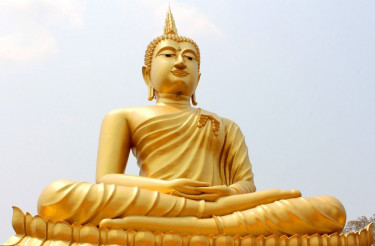In the rich tapestry of the Buddhist calendar, Vesak stands out as the most profoundly significant and revered festival. This sacred observance is not merely a date on the calendar; it is a global celebration of the life and legacy of Gautama Buddha, the enlightened one whose teachings continue to guide millions towards peace and wisdom. Known by various names across different cultures and regions, this auspicious day marks three pivotal events in the Buddha's existence: his birth, his attainment of full enlightenment (Nirvana), and his passing into Parinirvana (death).
The resonance of Vesak echoes from the quiet contemplative monasteries of Tibet to the bustling streets adorned with vibrant lanterns in Southeast Asia. It is a time for deep reflection, renewed commitment to spiritual practice, and acts of boundless generosity.
Understanding the Names and Origins of Vesak
The festival's name, "Vesak," finds its roots in the ancient Indian month of Vesākha (in Pali) or Vaiśākha (in Sanskrit), which typically falls in April or May of the Gregorian calendar. This linguistic connection underscores the festival's deep historical and cultural ties to the Indian subcontinent, the birthplace of Buddhism.
Beyond its primary name, Vesak is embraced with unique linguistic and cultural variations:
- Visakah Puja: Commonly observed in Southeast Asian countries like Thailand, Laos, and Cambodia, "Puja" signifies reverence and worship, highlighting the devotional aspect of the celebrations.
- Buddha Purnima: Predominantly used in South Asian nations, including India and Nepal, "Purnima" specifically refers to the full moon day, emphasizing that these momentous events in Buddha's life traditionally occurred on a full moon.
- While sometimes mistakenly associated with the "Sinhalese" people, it's important to clarify that "Sinhalese" refers to the ethnic group primarily found in Sri Lanka. In Sri Lanka, Vesak is celebrated with immense fervor and is a public holiday, often marked by elaborate decorations, street food stalls (dansals), and intricate lantern displays that illuminate the night sky, creating a truly magical atmosphere.
The Triple Significance: Birth, Enlightenment, and Parinirvana
What makes Vesak truly unique is its commemoration of three distinct yet equally profound milestones in the life of Siddhartha Gautama, the historical Buddha. Tradition holds that all three events occurred on the same lunar day, albeit in different years, lending the festival an extraordinary depth of meaning:
- The Birth of Siddhartha Gautama: Celebrated in Lumbini, Nepal, around 623 BCE, his birth heralded the arrival of a compassionate being destined to illuminate the path to liberation for all sentient beings. Vesak reminds us of his human journey and the potential within each individual.
- The Attainment of Enlightenment (Nirvana): Under the Bodhi tree in Bodh Gaya, India, Siddhartha Gautama achieved Nirvana, a state of profound awakening and freedom from suffering. This moment, celebrated on Vesak, symbolizes the ultimate realization of truth and the end of the cycle of rebirth (samsara). It offers hope and a clear objective for Buddhist practitioners.
- The Passing into Parinirvana (Death): At Kusinara, India, around 543 BCE, the Buddha entered Parinirvana. This is not seen as an end but as the final liberation from the physical body, signaling the complete cessation of all conditioned phenomena. Vesak honors his passing not with sorrow, but with a profound understanding of impermanence and the enduring legacy of his teachings.
Global Recognition and Observances
The universal importance of Vesak was officially recognized by the United Nations General Assembly in 1999 through Resolution 54/115. This resolution acknowledged the contribution that Buddhism, one of the oldest religions in the world, has made to humanity's spirituality and peace, and called for international observance of the Day of Vesak.
Across the globe, Vesak is celebrated with a spectrum of practices, all rooted in the core Buddhist principles of peace, compassion, and generosity:
- Temple Visits and Offerings: Devotees flock to temples, bringing offerings of flowers, incense, and candles. The act of offering flowers symbolizes the impermanence of life, while candles and incense represent the light of wisdom and the fragrance of virtue.
- Acts of Charity and Service: A strong emphasis is placed on performing good deeds. Buddhists engage in acts of kindness, such as donating food to the needy, blood donation drives, or setting free caged animals (symbolizing liberation).
- Meditative Practices: Many spend the day in meditation and quiet contemplation, reflecting on the Buddha's teachings and seeking to cultivate inner peace.
- Vegetarianism: Adopting a vegetarian diet for the day is a common practice, signifying respect for all life.
- Lanterns and Decorations: Especially in Southeast Asia, homes, streets, and temples are beautifully adorned with colorful lanterns, symbolizing the light of wisdom dispelling the darkness of ignorance.
Frequently Asked Questions About Vesak
- When is Vesak celebrated?
- Vesak is celebrated on the full moon day of the ancient Indian month of Vesākha (or Vaiśākha). Due to variations in lunar calendars, its date usually falls in May or sometimes early June in the Gregorian calendar. The exact date can differ slightly from country to country.
- Why is Vesak considered the most important Buddhist festival?
- Vesak holds paramount importance because it simultaneously commemorates the birth, enlightenment, and parinirvana (death) of Gautama Buddha. These three events collectively represent the entire arc of his earthly journey and the profound impact of his teachings on the world.
- What is the significance of the "Triple Gem" on Vesak?
- While not explicitly linked to the "Triple Gem" (Buddha, Dharma, Sangha) in its celebration of the three life events, Vesak deeply reinforces reverence for all three. The Buddha's life exemplifies the path, his enlightenment reveals the Dharma (teachings), and the collective observance strengthens the Sangha (community).
- What are common customs on Vesak?
- Common customs include visiting temples, making offerings of flowers, candles, and incense, performing acts of charity, engaging in meditation, observing vegetarianism, and decorating homes and public spaces with lanterns.

 English
English  español
español  français
français  português
português  русский
русский  العربية
العربية  简体中文
简体中文 
